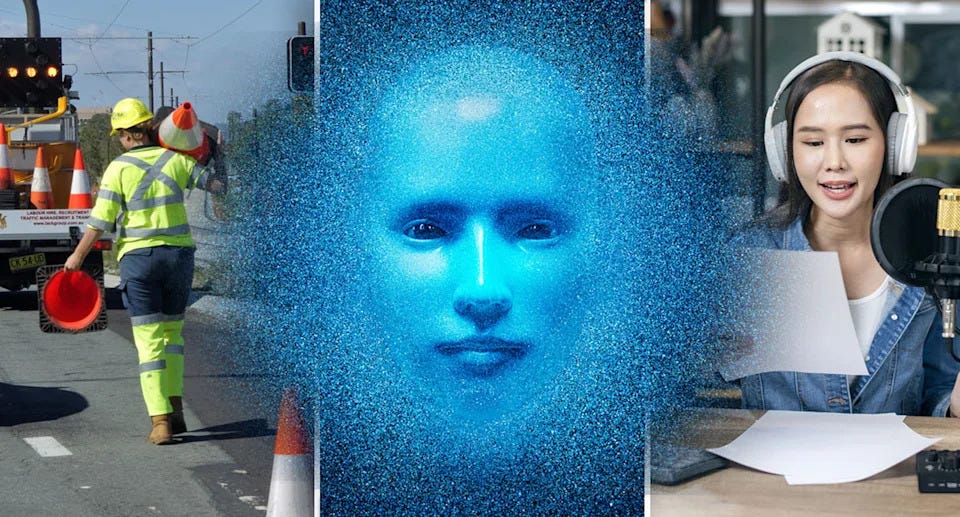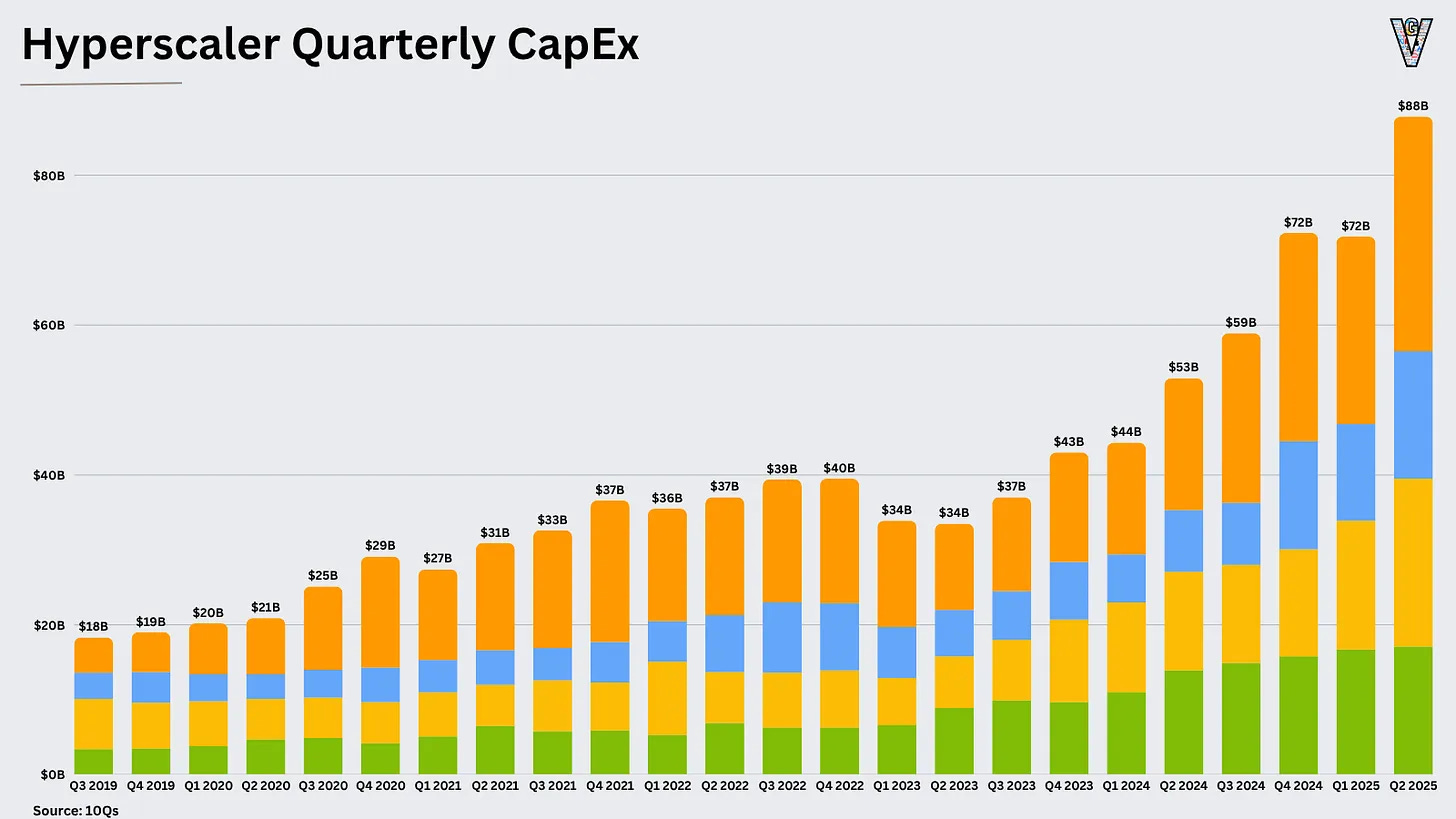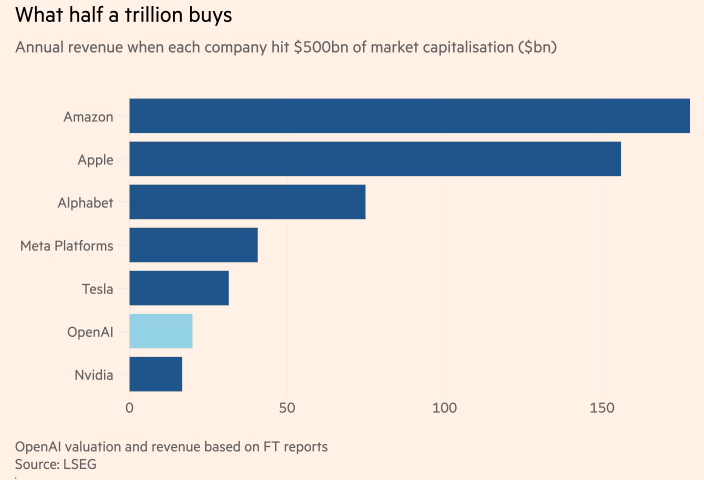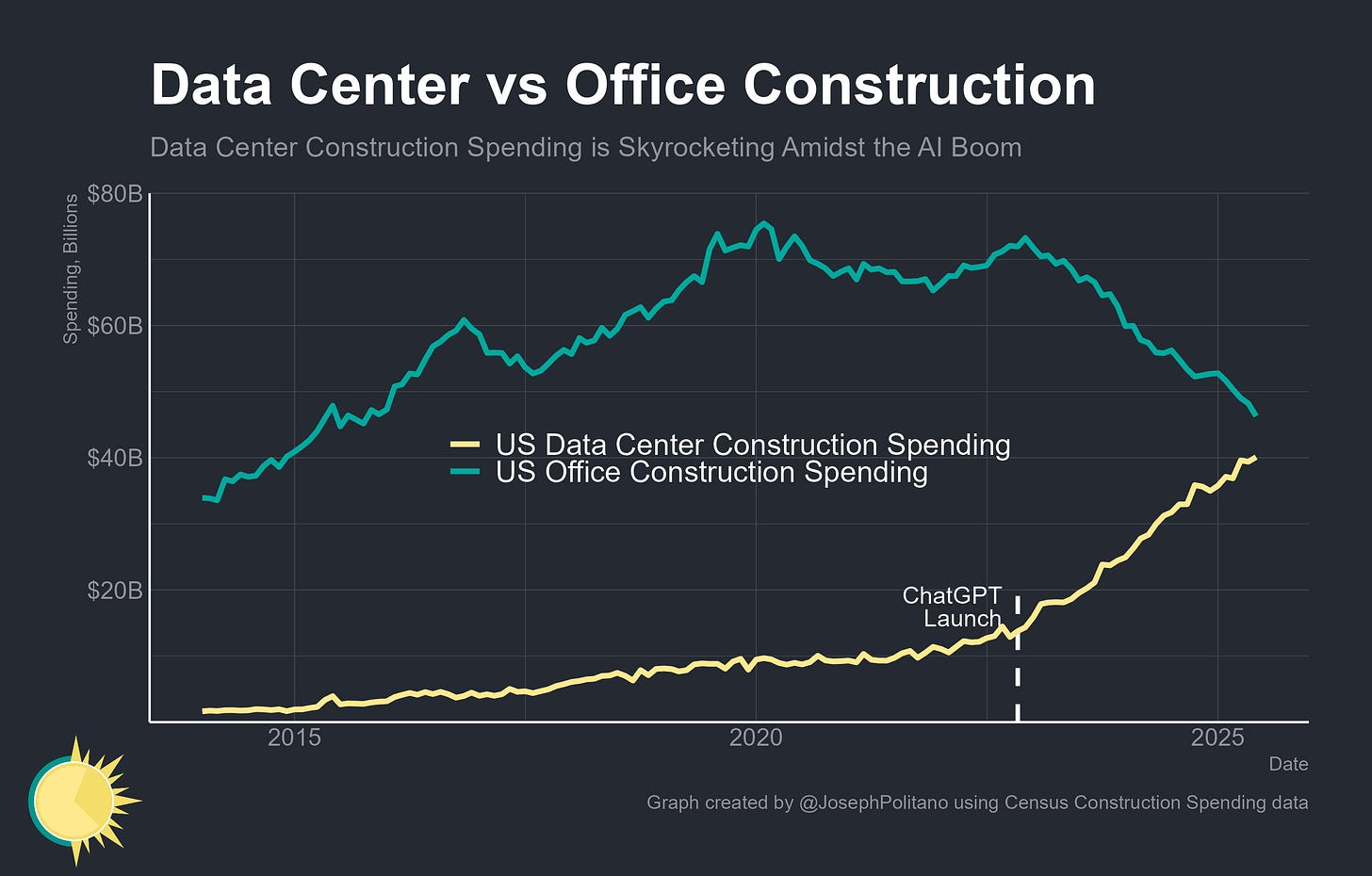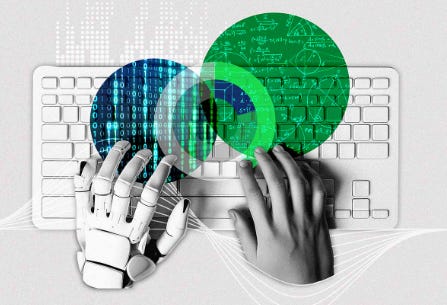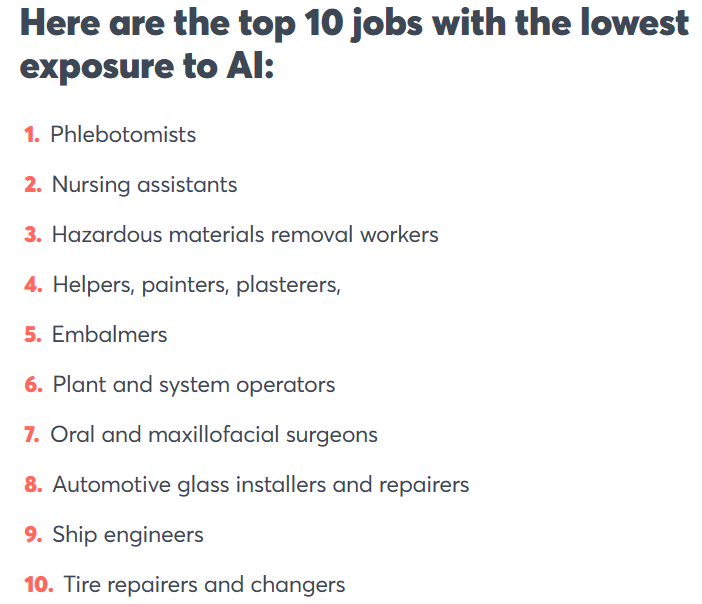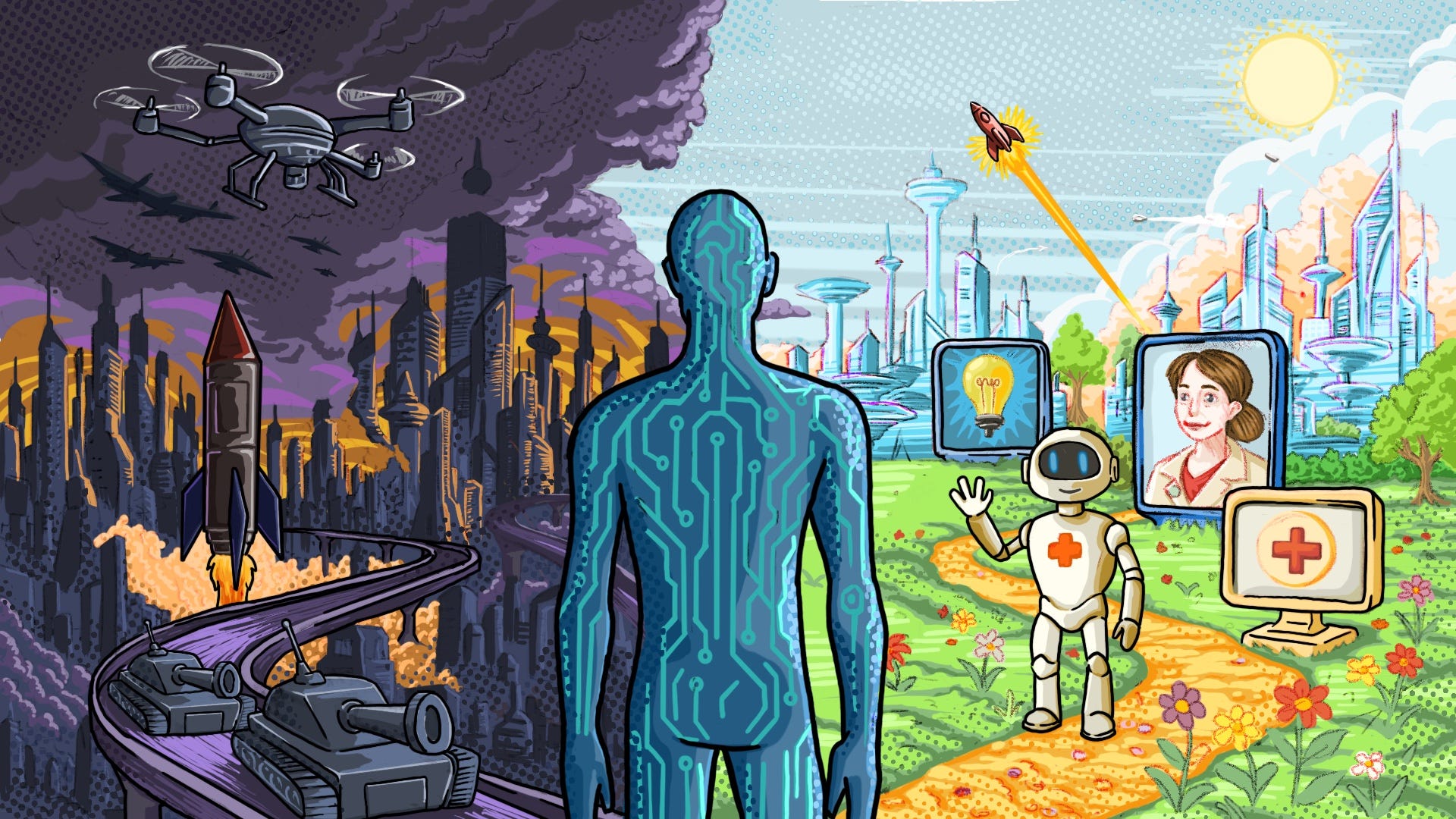Is Generative AI a General Purpose Technology (GPT)?
Economists at the Fed aren't convinced Generative AI will materially boost productivity. What are the top 40 jobs most vulnerable to automation by AI?
Hey All,
What I’m reading this week:
Fed’s Paper on Generative AI at the Crossroads
Microsoft’s report on The New Future of Work (more on the actual 2025 paper below).
Menlo’s Mid Year Market Update
AI News this Week
Anthropic released Claude Opus 4.1, that’s even better at coding.
OpenAI released its open-weight models gpt-oss
Meta is doubling down on AI, with Mark Zuckerberg declaring that “superintelligence” is now in sight as the company’s systems begin to improve themselves.
Google DeepMind released its world model Genie 3. World models of 2025 are going to accelerate robotics.
Google releases their coding agent Jules.
Manus A.I. launches Wide Research
Google launches Deep Think in Gemini app
NotebookLM announced video overviews.
Google DeepMind launches a Unified AI Model for Planetary Mapping called AlphaEarth (Astronomy).
Audio rundown on AI news items July-August, 2025
5 minutes, 50 seconds.
Big Questions about AI Linger 🧠
What happens when you begin to question everything around AI? While GPT-5 is delayed yet again due to capacity issues among other things - some of the more technologically optimistic narratives are starting to break down, in contrast to significant investments:
The datacenter roll out too has its risks, like OpenAI’s valuation growing too fast.
Eric Flaningam updated the market cap update of BigTech: Capex Keeps Rising!
Among the four main BigTech players, CapEx ~ has reached $88B this quarter! This signals 2026 will push demand for compute and AI chips even higher.
Capex vs. Reality 🌊
AI is supposed to benefit what young people can do, but what if it’s young people who get caught in a labor crunch?
There are signs of a hiring pullback in the technology sector, hitting younger employees there the hardest, according to Joseph Briggs, senior global economist of Goldman’s research division.
Unemployment among Gen Z workers in the tech sector has risen faster than the sector’s overall unemployment rate and that of young workers in general, according to Joseph Briggs, senior global economist for Goldman Sachs’ research division. Why do I get the feeling BigTech doesn’t care about that?
Unemployment rates among tech workers between 20 and 30 years old jumped by 3 percentage points since the start of this year, Briggs said. That’s a lot, especially when you consider the capital required to build all of these datacenters, their environmental costs and suddenness of the investment
The Financial Times notes that these debt-funded infrastructure investments were based on fantastical demand projections for a product that quickly became commoditised.
BigTech Capex is being rewarded by shareholders in a race for AI Supremacy
Meanwhile OpenAI is itself worth $500 billion before it even makes $20 Billion, many years from even being profitable. What could go wrong? Historically this is a very high number. While OpenAI’s revenue is growing fast, most of this is based on the most fickle revenue of all - subscriptions from consumers.
Other major BigTech companies hit $500 billion valuation when they were far more mature businesses.
OpenAI’s historic revenue growth speed is pushing the world to build more and more datacenters. But it’s probably the wrong signal to follow.
Are Data Centers the New Offices?
We are pouring money into datacenters and to meet demands for compute that can be artificially prolonged indefinitely to grow the Cloud even faster, but is that an ideal scenario? Does it benefit civilization?
“We're getting extremely close to the day when America spends more money to build data centers than office buildings Only 5 years ago, office construction spending was 7x data center spending!” - Joey Politano on X.
Early Adopters vs. the Rest of Humanity
A recent Gallup report showed that it’s mainly white-collar workers increasing AI-use with 27% frequently using AI at work, up 12% since 2024.
Most of AI use is in fact concentrated in three fields. Industries with the most prolific AI users were tech (50%), professional services (34%), and finance (32%.)
💡 What if? 🤔
Generative AI doesn’t impact GDP?
Generative AI doesn’t really boost productivity in a meaningful way as an economic driver?
BigTech and Cloud hyperscaler capital expenditures in AI Infrastructure, AI talent, models and products never deliver full ROI?
What if Gen AI isn’t a General Purpose Technology - like we have been led to believe?
What if the gulf between the reality and the hype is so manipulated, even Washington has been deceived. What will be the consequences of all of this? Now I’m not suggesting AI is entirely a money trap, but this does not sound like new technological layer that has much due diligence, risk management or even positive impact on society outside of making the most powerful companies grow faster.
Meanwhile, frequent use of AI by production and frontline workers was flat for two years, from 11% in 2023 to 9% in 2025, per Gallup.
There are two sides to this story, odd that the other one isn’t being told.
Even as Generative AI proliferates as a disruptive technology, what if its economic impact just aren’t as significant as we are being led to believe. I haven’t read much analysis or many projections of what happens if AI doesn’t reach the enormous potential we have set for it.
General Purpose Technologies are characterized by pervasiveness, inherent potential for technical improvements, and ‘innovational complementarities’, giving rise to increasing returns-to-scale. Are we starting to see that with Generative AI? What if we are over-hyping a technology that initially benefits the few, rather than the many? I cannot shake some of these big questions around AI. Not everything is adding up from the vision down to the reality. And if we are not seeing the promise materialize, how long do we wait expecting to see the projected results? And if it doesn’t materialize, how long will we be stuck pretending. The Microsoft paper (more on this later) repeated themes we’ve read before:
Top occupations with lowest exposure to AI
U.S. Labor force disruptions - White vs. Blue Collar
I haven’t read many stories about the blue-collar boom, a reaction to uncertainty. blue-collar roles have evolved in the past few decades and have become more attractive career paths for young people, and with the low risk of AI exposure, blue-collar jobs will only become more popular. In the U.S. as youth unemployment rises, immigration slows (read paper) and AI is being used to target citizens like for deportations, what sort of a world is AI really leading us to?
How can we expect AI to moderate the economic impacts of slower immigration? The total US population is growing at an annualized rate of 0.5 percent, down from 1 percent in late 2023.
Clearly many of our expectations around the U.S. economy and the impact of AI aren’t in sync with the reality on the ground.
Negative economic and jobs data is beginning to be suppressed by the White House, as the backwards looking data really isn’t great in terms of having a strong economy or abundant opportunities for decent jobs. AI isn’t going to save us from ourselves. Productivity boosts from AI are virtually non-existent for a multitude of real world jobs. Large segments of the population have no use for Generative AI or their products in their jobs. While they are being exaggerated in the most cited use cases.
If AI was a general purpose technology, I’d expect spending to approach 19th century Railway (road) like levels. To have measurable and significant impacts on GDP. Three years later that’s not what we are seeing.
What we are witnessing in 2025 is mostly just OpenAI adoption of ChatGPT becoming more popular (globally) and AI coding’s impact with Claude code. In the United States the AI Boom’s risks to the economy are barely even talked about. Skepticism is shrugged off as ignorance to dominant group-think of Techno-optimism (literally the manifesto of VCs), that is now the politically correct dominant ideology to have. Analysts on Wall Street are also starting to spin some fairly speculative projections:


